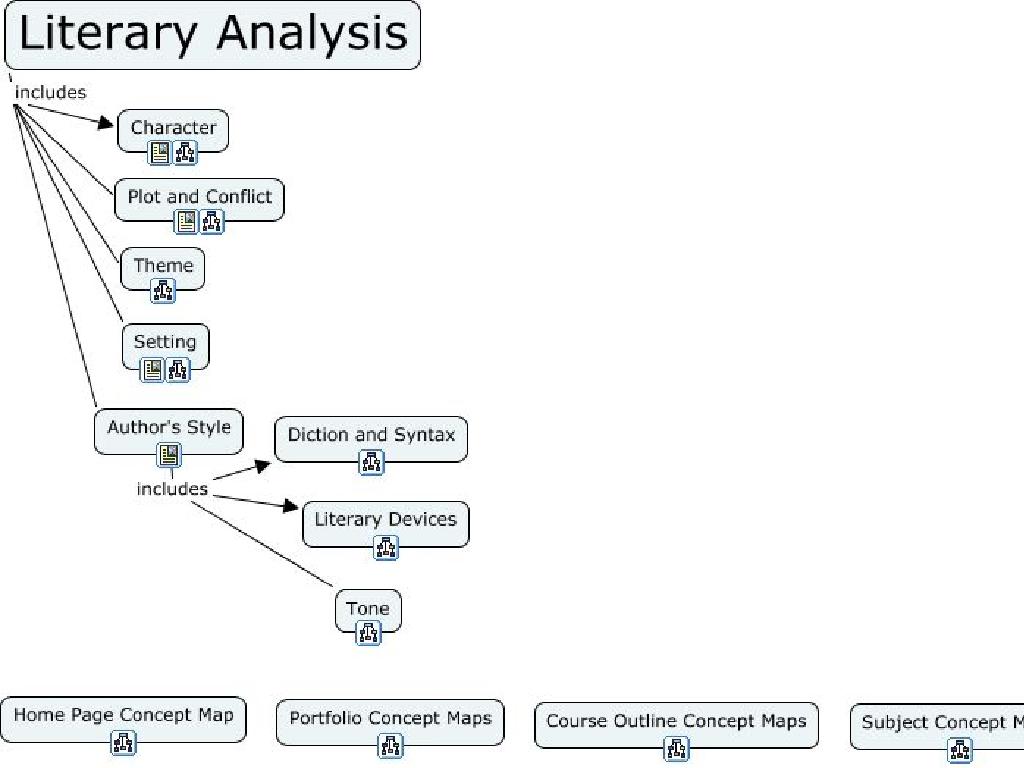Financial Sector
Subject: Economics
Grade: High school
Topic: Macroeconomics
Please LOG IN to download the presentation. Access is available to registered users only.
View More Content
Introduction to the Financial Sector
– Role of Financial Sector in Economy
– It’s the backbone of the economy, facilitating transactions, savings, and investments.
– Banks, Markets, and Institutions
– These entities manage money flow, investments, and savings, crucial for economic stability.
– Economic Impact of the Financial Sector
– Influences growth, stability, and prosperity by managing capital and resources.
– Financial Sector in Daily Life
– Affects personal finance, job opportunities, and overall economic well-being.
|
This slide introduces the financial sector and its significance in macroeconomics. The financial sector, comprising banks, stock markets, and other institutions, is essential for the functioning of the economy as it manages the flow of money and resources. It plays a pivotal role in economic growth, influencing everything from personal finance to global economic stability. Understanding this sector is crucial for students as it affects their everyday life, from savings accounts to job prospects in the financial industry. Encourage students to think about how their personal financial decisions are influenced by larger economic forces.
Functions of the Financial Sector
– Mobilize savings for investment
– Gathering funds from savers to fund new ventures
– Facilitate payments and transactions
– Simplifying the exchange of goods and services
– Provide risk management via diversification
– Spreading investments to minimize risks
– Connect savers and borrowers
– Matching those who save money with those who need loans
|
This slide aims to explain the core functions of the financial sector within the economy. It’s crucial for students to understand how the financial sector mobilizes savings, turning personal savings into investments for businesses and entrepreneurs. The sector also simplifies the process of buying and selling through various payment systems. Risk management is another key function, with the financial sector offering products that help individuals and companies mitigate risks through diversification. Lastly, the sector plays a pivotal role in connecting savers who wish to earn interest on their funds with borrowers who need capital for various purposes. Discuss examples such as banks collecting deposits and providing loans, and insurance companies managing risk through policy diversification.
Components of the Financial Sector
– Banks and non-bank financial institutions
– Serve as intermediaries for money transactions and savings.
– Stock and bond markets
– Platforms for buying/selling stocks and bonds, influencing the economy.
– Insurance companies and pension funds
– Provide financial security and retirement planning.
– Regulatory bodies and their roles
– Ensure stability and consumer protection in the financial system.
|
This slide aims to introduce students to the key components of the financial sector and their roles in the economy. Banks and non-bank financial institutions act as intermediaries, facilitating transactions and savings. Stock markets allow for the trading of company shares, while bond markets deal with the issuance and trading of debt securities. Insurance companies help individuals and businesses manage risk, and pension funds are crucial for retirement planning. Regulatory bodies, such as the SEC in the U.S., play a critical role in overseeing financial markets to ensure fairness, stability, and protection for investors and consumers. Discuss the importance of each component and how they interconnect to form the backbone of the financial system.
Money Markets vs. Capital Markets
– Distinction: Short-term vs. Long-term
– Money Markets deal with securities that mature in less than a year, while Capital Markets handle long-term investments.
– Instruments in Money Markets
– Common instruments include Treasury bills, commercial paper, and certificates of deposit.
– Instruments in Capital Markets
– Stocks, bonds, and government securities are typically traded in Capital Markets.
– Economic significance of each market
– Money Markets help in managing liquidity and financing short-term requirements; Capital Markets are crucial for long-term investment, economic growth, and wealth creation.
|
This slide aims to compare and contrast Money Markets and Capital Markets, highlighting their roles in the financial sector. Money Markets are used for short-term borrowing and lending, usually for periods up to one year. They are critical for maintaining liquidity in the financial system. On the other hand, Capital Markets are involved with long-term securities which have a life of more than one year and are pivotal for raising capital for long-term projects and investments. Understanding the instruments traded in each market, such as Treasury bills in Money Markets and stocks in Capital Markets, is essential for grasping how they function and their impact on the overall economy. The slide should emphasize the importance of both markets in facilitating economic stability and growth.
Interest Rates and Monetary Policy
– Central Banks’ economic role
– Central Banks manage the country’s currency, money supply, and interest rates.
– Interest Rates’ influence on savings
– Higher interest rates can encourage saving by offering better returns.
– Impact on investments
– Conversely, lower interest rates can boost investment by reducing borrowing costs.
– Monetary Policy tools
– Tools include open market operations, reserve requirements, and the discount rate.
|
This slide aims to explain the intricate relationship between interest rates, monetary policy, and the financial sector. Central Banks, such as the Federal Reserve in the U.S., play a pivotal role in regulating the economy by controlling the money supply and setting interest rates. These interest rates directly affect how much people save and invest; higher rates typically increase savings but can discourage borrowing for investments, while lower rates can stimulate investment but reduce the incentive to save. The tools of monetary policy, including open market operations, reserve requirements, and the discount rate, allow Central Banks to manage inflation and influence economic growth. Discuss examples like the Federal Reserve’s response to economic crises to illustrate these concepts.
Financial Crises and Economic Stability
– Case study: 2008 Financial Crisis
– A global economic disaster triggered by the collapse of the housing market.
– Link between instability and downturns
– Financial instability can reduce investments, increase unemployment, and lower consumer spending.
– Preventative measures for crises
– Regulations, risk management, and economic policies can mitigate the impact of financial crises.
– Importance of economic stability
|
This slide aims to explore the concept of financial crises within the context of macroeconomics and their impact on economic stability. The 2008 Financial Crisis serves as a case study to illustrate how the collapse of a financial sector can lead to widespread economic downturns. Discuss the chain reaction from financial instability to reduced investments, higher unemployment, and decreased consumer spending. Highlight the importance of preventative measures such as proper regulations, risk assessments, and sound economic policies to maintain stability. Encourage students to think critically about the role of government and financial institutions in preventing such crises.
Global Financial Sector Overview
– Interconnected global markets
– Markets are linked globally, affecting investments and economies worldwide.
– Role of financial institutions
– Institutions like the IMF and World Bank shape financial policies and provide aid.
– Impact of global decisions
– Decisions by major economies can lead to significant effects on global trade and investment.
– Local economies’ response
– Local economies must adapt to international financial trends to remain competitive.
|
This slide aims to provide students with an understanding of the complexity and significance of the global financial sector within macroeconomics. Highlight the interconnectedness of global financial markets and how they influence each other, affecting investments, currency values, and economic stability. Discuss the role of international financial institutions, such as the IMF and World Bank, in shaping financial policies, providing aid, and their influence on global economics. Explain how decisions made in the global financial sector can have far-reaching effects on local economies, including changes in employment, investment, and economic growth. Encourage students to think critically about how local economies can adapt and respond to these global financial trends and decisions.
Class Activity: Financial Sector Simulation
– Divide into financial institution groups
– Simulate a financial scenario
– Each group acts out a scenario, e.g., a bank handling a crisis
– Discuss inter-group impact
– How does a decision by one bank affect others?
– Reflect on the financial interconnectivity
|
This activity aims to provide students with a practical understanding of the financial sector’s interconnected nature. By dividing the class into groups representing different financial institutions such as banks, investment firms, and insurance companies, students can role-play scenarios that these institutions might face, such as a bank run, stock market crash, or an insurance payout after a natural disaster. After the simulation, lead a discussion on how the actions of one institution can affect the others, highlighting the ripple effects in the financial system. This will help students grasp the complexity and the systemic risks within the financial sector. Possible scenarios for each group can include interest rate changes, regulatory impacts, or economic downturns.






